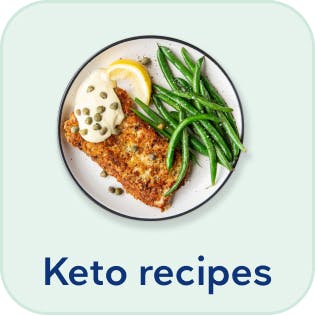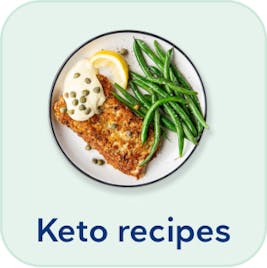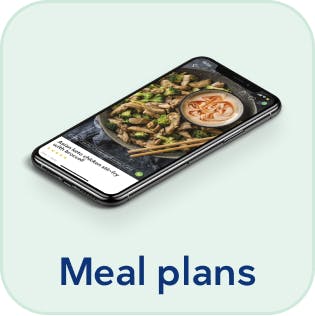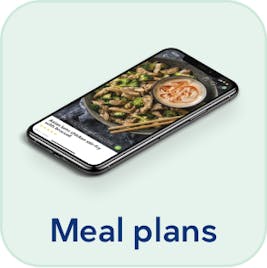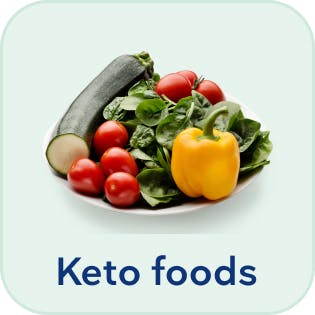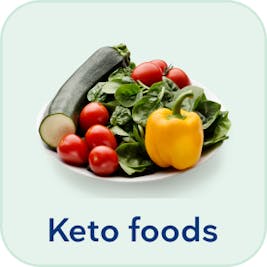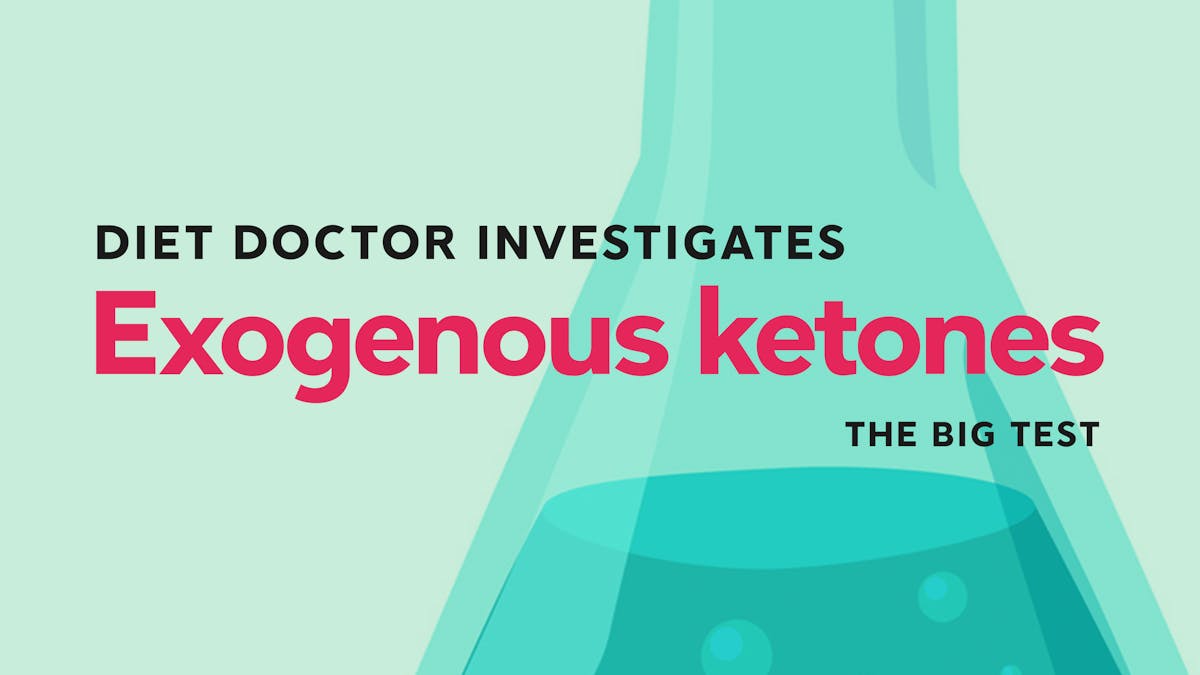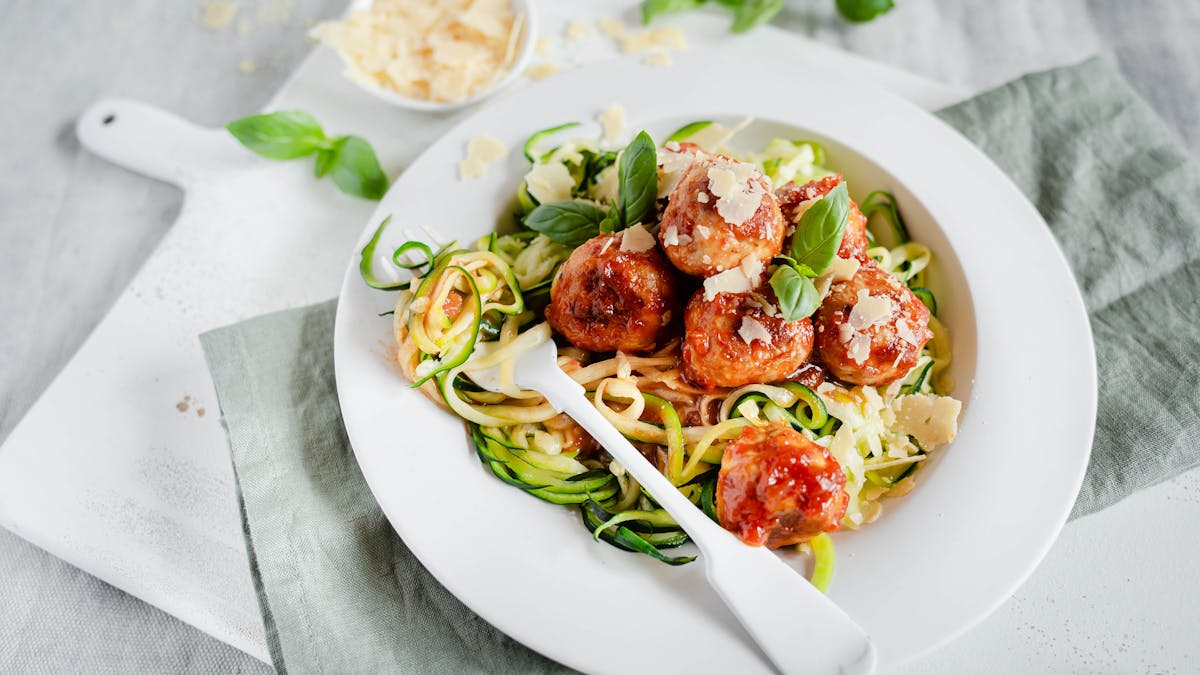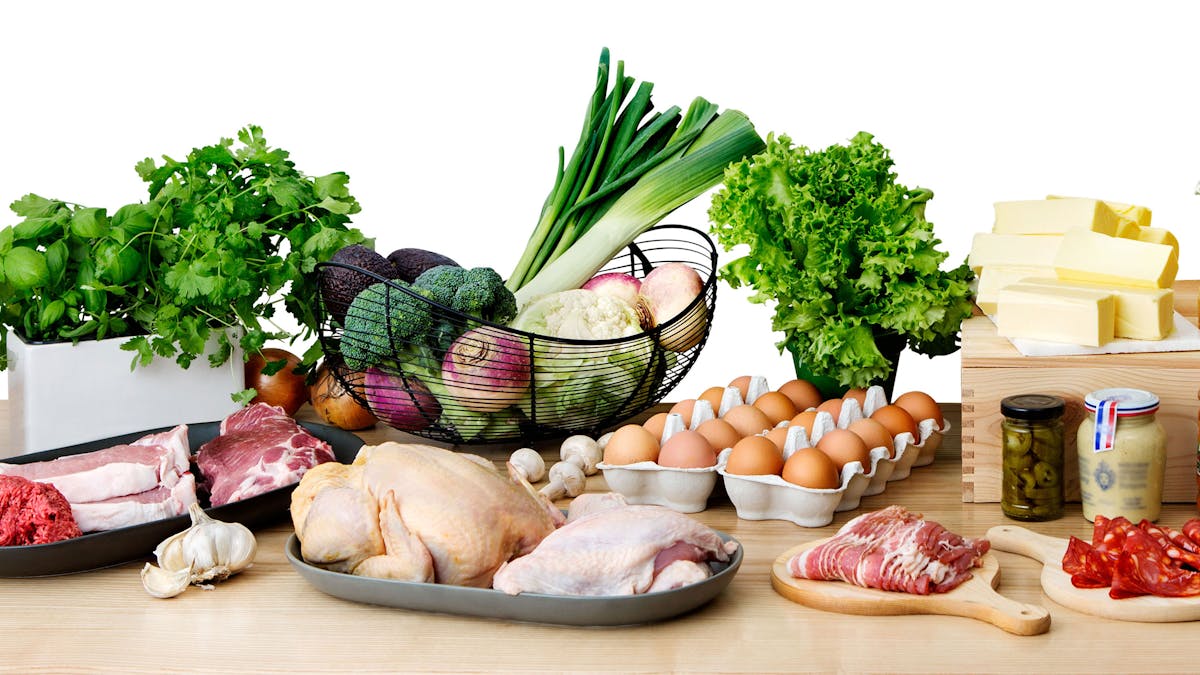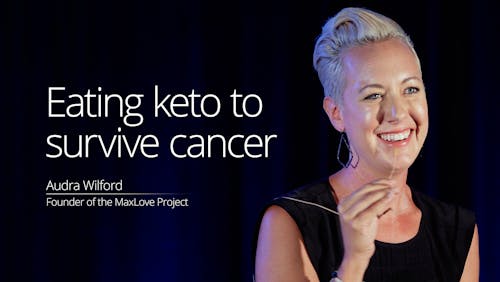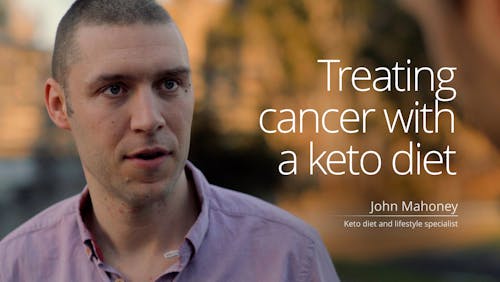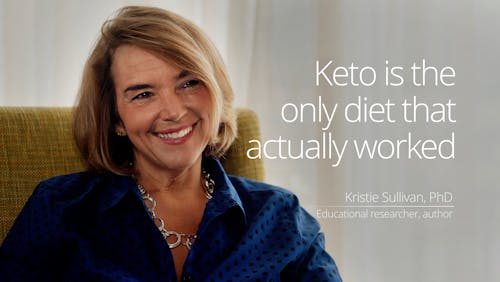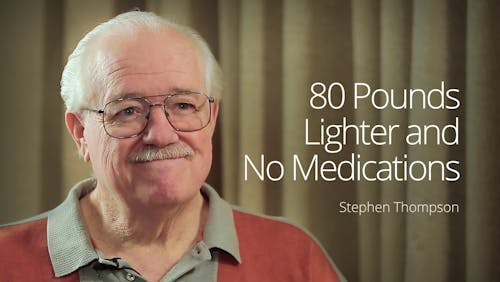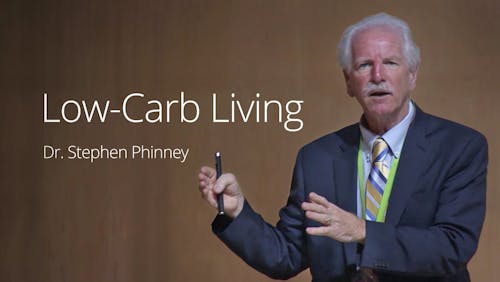Do you need electrolyte supplementation on a low-carb or keto diet?
It’s becoming more widely accepted that low-carb and ketogenic diets can be healthy and nutritionally complete.1 Meat, fish, eggs, dairy, nuts and vegetables are rich in key nutrients that your body needs on a daily basis. In some cases, however, supplementing with minerals known as electrolytes may be beneficial.This is because when carb intake is extremely low, levels of electrolytes – especially sodium – can drop. And if this happens, you may not feel your best.2
Symptoms of electrolyte deficiency and what to do about them
Sodium
- Fatigue
- Weakness
- Headaches
- Difficulty concentrating
Be more liberal with the salt shaker at mealtimes. If needed, especially the first week, have 1-2 cups of bouillon or broth daily. Learn more
















Potassium
- Muscle cramps
- Muscle twitching
- Heart palpitations / increased awareness of heartbeat
Eat an extra avocado or portion of leafy greens or mushrooms per day. Learn more
















Magnesium
- Muscle cramping or twitching at night or after exercise
Eat seeds like hemp, pumpkin and chia or a portion of mackerel, almonds or leafy greens per day. If needed, take a magnesium supplement. Learn more
















Interested in learning more about why electrolyte levels can decrease on low carb and other dietary options to replenish them? Keep reading!
The keto flu
When you restrict carbohydrates, your body begins to process electrolytes differently. This is because when insulin levels are low, the kidneys excrete more sodium.6 Since there is a delicate balance between sodium and other electrolytes in the body, the loss of sodium may disrupt levels of other electrolytes as well.
In some cases, this leads to symptoms that are often described as the “keto flu.” These symptoms are usually temporary and resolve as your body adapts to low carb.7
Fortunately, replenishing sodium, magnesium, and potassium may help prevent or greatly diminish symptoms of keto flu and other side effects.8
Do you need mineral supplementation?
The decision to take mineral supplements should be based on whether you experience any of the symptoms described above.9 If you already feel well on a keto diet, you may not need to add any supplements or electrolyte-rich food.10
Bear in mind that if you engage in endurance exercise or any type of rigorous physical activity, you may find it difficult to get enough electrolytes solely from food, and you may choose to take supplements for performance reasons.11
Below, we cover the daily mineral needs for people following a low-carb or keto diet, the best low-carb-friendly food sources, and supplement recommendations for those who can’t meet their needs through diet alone.
Sodium
According to many health organizations, most of us should be cutting back on sodium in order to prevent high blood pressure and other health problems. For example, The American Heart Association recommends consuming less than 2.3 grams and ideally no more than 1.5 grams of sodium per day.
For people with hypertension and insulin resistance who eat high-carb diets, this advice might be warranted. However, multiple meta-analyses of RCTs have shown a small blood pressure lowering effect without clear evidence of improved overall health.12
And many observational studies suggest that the optimal sodium intake is between 3 and 6 grams per day.13 In addition, on a low-carb or keto diet, your sodium needs may actually increase, due to increased losses via the kidneys.14 In this situation, we are therefore usually more concerned with too little sodium rather than too much.
Symptoms of deficiency
- Fatigue
- Weakness
- Headaches
- Difficulty concentrating15
Add salt to your diet
Daily need: Most people on a low-carb diet will likely feel best with 3–7 grams of sodium (7–17 grams of salt, or about 1-3 teaspoons) per day.1617
However, if you have certain medical conditions — such as hypertension, kidney disease, or congestive heart failure — you may need to be more cautious about sodium. Read our complete guide on salt to learn why optimal intake varies from person to person.
Most people get at least 2 grams of sodium from the foods they eat. You can add a teaspoon of salt to a liter of water and drink it over the course of the day. Another strategy is to drink broth or bouillon, which contains about 1 gram of sodium per cup.








If you do physical exercise, adding sodium prior to a workout may improve your performance. Drs. Phinney and Volek recommend taking one-half teaspoon of salt within the half hour prior to exercising in their book The Art and Science of Low Carb Performance.18
Note: If you have high blood pressure, heart failure, or kidney disease, be sure to speak with your doctor before increasing your sodium intake.
Potassium
It is estimated that, as a population, we typically consume less than half the recommended amount of potassium.19 Therefore, it is even more important to optimize intake of this essential nutrient, which can be lost during low-carb or keto eating.
As sodium loss in the urine increases during the initial phase of a low-carb or keto diet, the kidneys may respond by trying to reabsorb sodium. Unfortunately, that process comes at the expense of losing potassium, a process that maintains biochemical balance.20
Symptoms of deficiency
- Muscle cramps
- Muscle twitching
- Heart palpitations/Increased awareness of heartbeat21
High-potassium foods
Daily need: 3,000–4,700 mg (3–4.7 g) of potassium
To get more potassium into your diet, you could take potassium supplements. Or, why not try adding an avocado or a couple of servings of other low-carb-friendly high-potassium foods to your diet on a daily basis?








- Avocado 1,000 mg per large avocado (200 grams)
- Swiss chard, cooked 950 mg per cup (175 grams)
- Spinach, cooked 840 mg per cup (180 grams)
- Mushrooms, cooked 550 mg per cup (150 grams)
- Brussels sprouts: 500 mg per cup (160 grams)
- Broccoli, cooked 460 mg per cup (160 grams)
- Salmon 430–500 mg per 4 ounces (114 grams)
- Meat 400–500 mg per 4 ounces (114 grams)
- Flounder 400 mg per 4 ounces (114 grams)
- Artichoke 345 mg per medium artichoke (121 grams)
- Hemp seeds 335 mg per ounce (30 grams)
- Almonds 200 mg per ounce (30 grams)
Supplements
If you’re very active or don’t consume enough potassium-rich food on a regular basis, it might make sense to take supplemental potassium on an as-needed basis.
Potassium supplements are typically available as 99 mg tablets.22 Note that although the front label on a potassium supplement may list 595 mg as the dosage, each tablet only contains 99 mg of pure potassium, which can be verified on the detailed “Supplement Facts” label on the back of the container.
Your blood potassium levels need to remain within a narrow range, and taking too much in concentrated form can be dangerous, especially if you take certain medications or have kidney disease. For this reason, it’s best to get your potassium through food intake whenever possible.
Note: If you have high blood pressure, heart disease, kidney disease, or are taking medications for any other condition, be sure to speak with your doctor before you take a potassium supplement.
Magnesium
Although magnesium is found in a wide variety of foods, many people don’t get enough from diet alone. In fact, it’s estimated that almost 50 percent of the US population does not meet the daily dietary requirement for magnesium.23
Symptoms of deficiency
Symptoms of magnesium deficiency may include muscle twitching or cramping at night or after exercising. Although muscle cramps can also occur with inadequate potassium, sodium, or fluid intake, getting too little magnesium can be a common cause.24
High-magnesium foods
Daily need: 400 mg magnesium
Most foods don’t provide much magnesium, but there are a few good sources that can be included on a low-carb or keto diet. What’s more, many of them are high in potassium as well. Eating Swiss chard and other cooked greens on a regular basis is a great strategy for helping to meet your magnesium needs.








- Hemp seeds 195 mg per ounce (30 grams)
- Swiss chard, cooked 150 mg per cup (175 grams)
- Pumpkin seeds, dried 150 mg per ounce (30 grams)
- Mackerel 105 mg per 4 ounces (114 grams)
- Chia seeds 95 mg per ounce (30 grams)
- Dark chocolate (70–85% cacao) 70–90 mg per ounce (30 grams)
- Almonds 75 mg per ounce (30 grams)
- Spinach, cooked 75 mg per cup (180 grams)
- Pine nuts 70 mg per ounce (30 grams)
- Avocado 60 mg per large avocado (200 grams)
- Artichoke 50 mg per medium artichoke (120 grams)
Supplements
Taking up to 400 mg of magnesium per day in supplement form is safe for most people with healthy kidneys. Some forms of magnesium can cause digestive issues, however, especially when taken alone. For this reason, it’s best to take a magnesium supplement with a meal.
Forms that are well absorbed include magnesium citrate, magnesium chloride, and magnesium glycinate (also known as magnesium bisglycinate or diglycinate).25 Additionally, magnesium glycinate and Slow-Mag (a slow-digesting form of magnesium chloride) seem least likely to cause loose stools or other digestive issues.26
Note: If you have kidney disease, you may not be able to handle a large amount of magnesium. In addition, certain medications may interact negatively with magnesium supplements. Speak with your doctor before taking a magnesium supplement if any of these apply to you.
Conclusion
So, in the end, do you need to take supplements on a keto or low-carb diet? Probably not. You can likely pick and choose your favorites from all the foods listed in this guide to meet your requirements. But, if you don’t like many of these foods; find it difficult to eat enough to get the minimum recommended amounts of minerals; or if you exercise regularly and have excessive loss of electrolytes, then you may want to consider supplementation.
Related material
The keto flu, other keto side effects, and how to cure them >
More keto guides
Keto videos
Do you need electrolyte supplementation on a low-carb or keto diet? - the evidence
This guide is written by Franziska Spritzler, RD and was last updated on June 19, 2025. It was medically reviewed by Dr. Michael Tamber, MD on October 20, 2021 and Dr. Bret Scher, MD on October 3, 2022.
The guide contains scientific references. You can find these in the notes throughout the text, and click the links to read the peer-reviewed scientific papers. When appropriate we include a grading of the strength of the evidence, with a link to our policy on this. Our evidence-based guides are updated at least once per year to reflect and reference the latest science on the topic.
All our evidence-based health guides are written or reviewed by medical doctors who are experts on the topic. To stay unbiased we show no ads, sell no physical products, and take no money from the industry. We're fully funded by the people, via an optional membership. Most information at Diet Doctor is free forever.
Read more about our policies and work with evidence-based guides, nutritional controversies, our editorial team, and our medical review board.
Should you find any inaccuracy in this guide, please email andreas@dietdoctor.com.
Nutrition & Metabolism 2017: Assessing the nutrient intake of a low-carbohydrate, high-fat (LCHF) diet: a hypothetical case study design [descriptive study; ungraded] ↩
Dr. Steve Phinney, one of the foremost experts in ketogenic diets, has discussed the importance of electrolyte management in several papers, including this one:
Nutrition & Metabolism 2004: Ketogenic diets and physical performance [overview article; ungraded] ↩
The British Medical Journal 2006: Disorders of sodium balance [overview article; ungraded] ↩
Medical Clinics of North America 1997: Hypokalemia and hyperkalemia [overview article; ungraded] ↩
International Journal of Endocrinology 2018: Magnesium and human health: perspectives and research directions [review article; ungraded] ↩
American Journal of Physiology. Renal Physiology 2007: Insulin’s impact on renal sodium transport and blood pressure in health, obesity, and diabetes [overview article; ungraded]
Diabetalogia 1981: The effect of insulin on renal sodium metabolism [overview article; ungraded] ↩
In one study, people lost more sodium and potassium in their urine during the initial stage of a low-carb diet, although this effect was no longer seen after 28 days:
Annals of Nutrition & Metabolism 1981: Loss of weight, sodium and water in obese persons consuming a high- or low-carbohydrate diet [non-randomized trial; weak evidence]
In addition, this is based on clinical experience of low-carb practitioners and was unanimously agreed upon by our low-carb expert panel. You can learn more about our panel here [weak evidence]. ↩
This is based on clinical experience of low-carb practitioners and was unanimously agreed upon by our low-carb expert panel. You can learn more about our panel here [weak evidence]. ↩
When beginning a low-carb or ketogenic diet, subtle deficiencies of sodium, potassium, or magnesium often do not show up on blood testing; therefore, we recommend empirically increasing foods rich in those electrolytes if having symptoms. Sometimes, supplements are required to get enough potassium or magnesium. It is critical to avoid overdosing, especially with potassium, which has a narrow therapeutic window, so be sure to consult your healthcare provider before starting a supplement.
This is based on the consistent clinical experience of doctors who regularly provide patients with low-carb nutrition interventions.[weak evidence] ↩
This is based on the consistent clinical experience of doctors who regularly provide patients with low-carb nutrition interventions.[weak evidence] ↩
This is detailed by Dr. Stephen Phinney and Jeff Volek in their book The Art and Science of Low Carbohydrate Living.
Diet Doctor will not benefit from your purchases. We do not show ads, use any affiliate links, sell products or take money from industry. Instead we’re funded by the people, via our optional membership. Learn more ↩
A Cochrane meta-analysis of RCTs shows no clear benefit:
Cochrane 2014: Reduced dietary salt for the prevention of cardiovascular disease [strong evidence]
Journal of the American Medical Association 1996: Effect of reduced dietary sodium on blood pressure: a meta-analysis of randomized controlled trials [strong evidence]
American Journal of Hypertension 2011: Reduced dietary salt for the prevention of cardiovascular disease: a meta-analysis of randomized controlled trials (Cochrane review) [strong evidence]
Cochrane Systematic Review 2017: Effects of low sodium diet versus high sodium diet on blood pressure, renin, aldosterone, catecholamines, cholesterol, and triglyceride [systematic review of randomized trials; strong evidence]
Although the original paper (below) found a mild benefit of salt restriction in certain subgroups, the authors published a correction to their paper with an updated statistical analysis that they believe more accurately reflects the conclusions that can be drawn from the available evidence. Their corrected analysis shows no benefit of salt restriction on mortality in normotensive or hypertensive people.
Annals of Internal Medicine 2019: Effects of nutritional supplements and dietary interventions on cardiovascular outcomes: An umbrella review and evidence map [systematic review of RCTs; strong evidence] ↩
When taking the totality of trial and observational data into account, it seems likely that there is a U-shaped relationship between sodium intake and cardiovascular risk, with elevated risk at the lowest and highest levels of sodium intake.
The Lancet 2016: Associations of urinary sodium excretion with cardiovascular events in individuals with and without hypertension: a pooled analysis of data from four studies [observational study with HR < 2; very weak evidence]
The New England Journal of Medicine 2014: Urinary sodium and potassium excretion, mortality, and cardiovascular events [observational study with HR < 2; very weak evidence]
Journal of the American Medical Association 2011: Urinary sodium and potassium excretion and risk of cardiovascular events [observational study with HR < 2; very weak evidence] ↩
American Journal of Physiology. Renal Physiology 2007: Insulin’s impact on renal sodium transport and blood pressure in health, obesity, and diabetes [overview article; ungraded] ↩
Less common symptoms may include nausea, vomiting, or even loss of consciousness if sodium levels drop too low. ↩
Note that salt and sodium are not quite same thing, when calculating your daily intake. Salt contains only 40% sodium, and the remainder is another mineral, chloride. So although you increase your sodium intake by eating more salt, it’s important to remember that eating one teaspoon (6 grams) of salt provides you with only 2.4 grams of actual sodium. ↩
This is based on the consistent clinical experience of doctors regularly providing patients with low-carb nutrition interventions.[weak evidence] ↩
Diet Doctor will not benefit from your purchases. We do not show ads, use any affiliate links, sell products or take money from industry. Instead we’re funded by the people, via our optional membership. Learn more ↩
Circulation 2018: Sodium and potassium intake in US adults[editorial; ungraded] ↩
As sodium and potassium ions are both positively charged, it is necessary to maintain neutrality by exchanging one for the other. So if the kidney is reabsorbing more sodium, it must get rid of more potassium.
International Journal of Hypertension 2011: Insulin resistance, obesity, hypertension, and renal sodium transport [overview article; ungraded]
Virta Health blog post 2019: The importance of managing potassium and sodium as part of a well-formulated ketogenic diet [overview article; ungraded] ↩
Less common symptoms may include numbness, dizziness, abdominal cramping, and constipation. ↩
National Institutes of Health Office of Dietary Supplements: Potassium supplement brief [overview article; ungraded]
↩USDA: What we eat in America, NHANES 2005-2006, usual nutrient intakes from food and water compared to 1997 Dietary Reference Intakes for vitamin D, calcium, phosphorus, and magnesium [observational study; weak evidence]
Nutrition Review 2012: Suboptimal magnesium status in the United States: are the health consequences underestimated? [overview article; ungraded] ↩
The mineral is so important to muscle and physiologic functioning that Phinney and Volek devote almost three pages to it in their book, The Art and Science of Low Carbohydrate Living:
“Cramps during or after exercise or at night are a sign that your body has a major magnesium deficiency,” they write.[book excerpt; ungraded evidence]
There is some scientific support for this as well, although the findings are not universal.
Canadian Family Physician 1996: Muscle cramps and magnesium deficiency: Case reports [anecdotal report; very weak evidence]
However, the following Cochrane review found no benefit for muscle cramps in the general population with magnesium supplementation.
Cochrane Database Systematic Reviews 2012: Magnesium for skeletal muscle cramps [systematic review of randomized trials; strong evidence] ↩
Magnesium Research 2003: Mg citrate found more bioavailable than other Mg preparations in a randomised, double-blind study [randomized trial; moderate evidence]
Journal of Parenteral and Enteral Nutrition 1994: Bioavailability of magnesium diglycinate vs magnesium oxide in patients with ileal resection [randomized trial; moderate evidence]
Magnesium Research 2001: Bioavailability of US commercial magnesium preparations [non-controlled study; weak evidence] ↩
This is based on the consistent clinical experience of low-carb practitioners. [weak evidence] ↩



